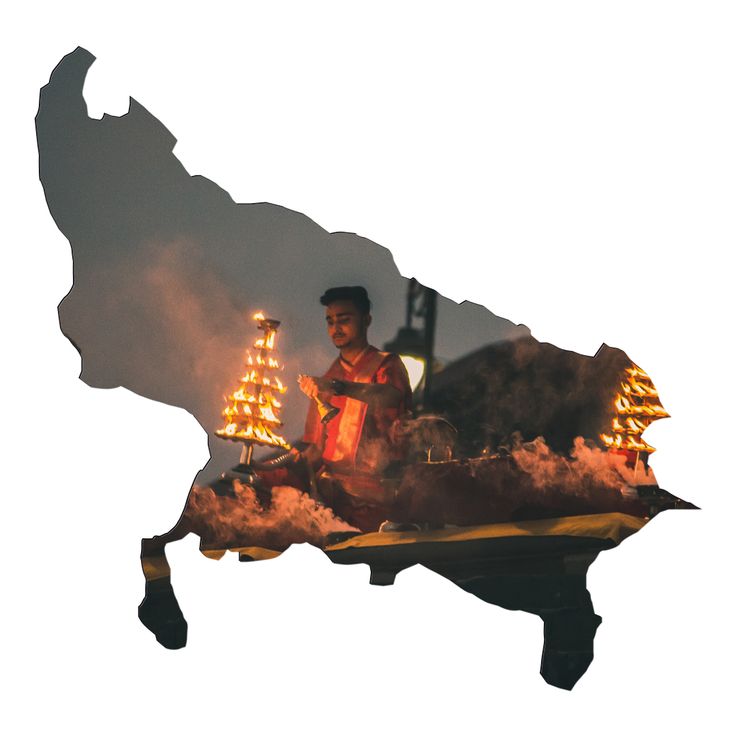Uttar Pradesh: 7 Powerful Insights into Its Cultural Legacy and Societal Significance
Introduction
Uttar Pradesh (UP), one of the most populous and culturally significant states in India, has a rich and diverse history that spans thousands of years. Known for its historic cities, religious significance, and dynamic culture, Uttar Pradesh plays a pivotal role in shaping the country’s social, political, and cultural fabric. Home to the cities of Agra, Varanasi, and Lucknow, UP is a center of art, religion, and history, leaving an indelible mark on India’s identity.
In this article, we delve into Uttar Pradesh’s history, daily life impacts, significance, and cultural contributions to society. With more than 200 million people, Uttar Pradesh’s influence extends well beyond its borders, making it an essential part of India’s progress and development.
History
It’s history is intertwined with that of ancient India, as it has been home to several powerful kingdoms, religious movements, and cultural revolutions. The state was historically a part of various empires, such as the Maurya Empire and the Gupta Empire. It is the birthplace of major religious figures like Lord Buddha and Lord Krishna.
- Ancient Civilization: The region is the cradle of several important ancient civilizations, including the Indus Valley Civilization. The Ganges River has long been considered the spiritual and cultural lifeblood of the region.
- Religious Significance: Uttar Pradesh is a hub for several religious practices and pilgrimages. The holy cities of Varanasi, one of the oldest cities in the world, and Ayodhya, the birthplace of Lord Rama, attract millions of pilgrims each year. The Kumbh Mela, held every 12 years at Prayagraj, is one of the world’s largest religious gatherings.
- Colonial Era: During the British colonial period, Uttar Pradesh played a central role in India’s freedom struggle, with cities like Kanpur and Meerut witnessing significant uprisings and movements against British rule. The First War of Indian Independence (1857) also had a major impact on shaping the future course of India’s independence movement.
- Post-Independence: After India gained independence in 1947, Uttar Pradesh became one of the most significant states in the Indian Union. Over time, it has grown economically and culturally, maintaining its role as a leader in politics, education, and social progress.
Daily Life
Daily life in Uttar Pradesh reflects the state’s deep cultural heritage and its blend of traditional practices with modern advancements. Agriculture remains the backbone of the state, but urbanization and industrialization are steadily changing the landscape.
- Agriculture: Agriculture is a crucial part of life in UP, with crops like wheat, rice, sugarcane, and potatoes being major contributors to the state’s economy. Rural life revolves around farming, with families working together to cultivate the land. Agriculture in UP also heavily impacts India’s food supply and agricultural exports.
- Culture and Traditions: Uttar Pradesh is a land of festivals, classical dance, music, and arts. Famous dance forms like Kathak and Kumar Gandharva’s classical music are deeply rooted in the state’s culture. Festivals such as Diwali, Holi, and Eid are celebrated with grandeur, showcasing the unity in diversity that the state embodies. Lucknow is especially famous for its Awadhi cuisine and Chikan embroidery, both of which reflect the region’s royal history.
- Education and Literacy: UP has some of India’s most prestigious educational institutions, such as the Banaras Hindu University (BHU) and Aligarh Muslim University (AMU). However, challenges remain in terms of literacy rates, with rural areas seeing lower education levels, though recent reforms are aimed at improving this.
- Urbanization and Infrastructure: Cities like Lucknow, Kanpur, and Agra are witnessing rapid urbanization, with an increase in infrastructure development, including modern roads, railways, and airports. However, despite this growth, challenges like overpopulation, pollution, and poverty continue to affect many of the state’s citizens.
Key Facts
- Capital: Lucknow, known for its cultural heritage, is the capital city of Uttar Pradesh.
- Largest State by Population: With a population of over 200 million, Uttar Pradesh is the most populous state in India.
- Geography: The state is blessed with a varied landscape, from the fertile plains of the Ganges to the arid areas near the Uttar Pradesh-Madhya Pradesh border.
- Languages: The official language of Uttar Pradesh is Hindi, though several dialects, including Awadhi and Braj Bhasha, are widely spoken.
- Tourism: Uttar Pradesh is a popular tourist destination, known for its historical sites like the Taj Mahal in Agra, the Ram Janmabhoomi temple in Ayodhya, and the ghats of Varanasi.
- Economy: The state’s economy is diverse, with agriculture, handicrafts, textiles, and IT services contributing significantly. Sugarcane and oilseeds are some of the primary crops, while the Taj Mahal brings millions of tourists each year.
- Religious Heritage: The state is a religious hub, with significant pilgrimage destinations like Mathura, Vrindavan, and Kashi.
Observance and Significant Points
- The Kumbh Mela: One of the world’s largest religious gatherings, the Kumbh Mela in Prayagraj draws millions of people to take a holy dip in the Ganges River, making it one of the most significant spiritual observances.
- Diwali and Holi: Diwali, the Festival of Lights, and Holi, the Festival of Colors, are celebrated with grandeur throughout Uttar Pradesh, especially in the Mathura-Vrindavan region, which is believed to be the birthplace of Lord Krishna.
- Ram Navami: The state celebrates Ram Navami, the birthday of Lord Rama, with grand processions, particularly in Ayodhya, which is considered the birthplace of Lord Rama.
- Eid: Uttar Pradesh is home to a significant Muslim population, and Eid is celebrated with great fervor, marked by prayers, feasts, and social gatherings.
Significance in Society
Uttar Pradesh holds an immense cultural, historical, and political significance within India. The state has played a vital role in shaping the nation’s identity, contributing to the fields of art, literature, politics, and education.
- Cultural Hub: Uttar Pradesh is home to several important cultural traditions, including classical dance, folk music, and theater. Lucknow’s classical Kathak dance, and the Ganga-Jamuni tehzeeb (a unique blend of Hindu and Muslim traditions), are some of the key highlights of its cultural diversity.
- Political Influence: Uttar Pradesh is crucial in Indian politics due to its large population and number of seats in the Lok Sabha (the lower house of Parliament). The state’s political parties, such as the Samajwadi Party (SP), Bharatiya Janata Party (BJP), and Bahujan Samaj Party (BSP), have a significant influence on national politics.
- Religious Significance: The state’s association with the birthplaces of key religious figures like Lord Krishna and Lord Rama, and its revered Ganges River, makes it one of the most spiritually significant regions of India. Varanasi, also known as Kashi, is considered the holiest city for Hindus.
Conclusion: A Glimpse Into the Future
Uttar Pradesh stands as a unique symbol of India’s cultural, historical, and religious diversity. As the state continues to evolve, balancing its deep-rooted traditions with modernization, it will remain a major player in the nation’s political, economic, and cultural progress. With its enormous potential, Uttar Pradesh’s future looks bright as it strives to improve infrastructure, education, and the lives of its people.
FAQs
- What is the capital of Uttar Pradesh? The capital of Uttar Pradesh is Lucknow.
- What is the population of Uttar Pradesh? Uttar Pradesh is the most populous state in India, with over 200 million people.
- What are the major tourist attractions in Uttar Pradesh? Key tourist destinations include the Taj Mahal, Varanasi, Ayodhya, and Vrindavan.
- What languages are spoken in Uttar Pradesh? Hindi is the official language, and many people also speak regional dialects like Awadhi and Braj Bhasha.
- What are the major industries in Uttar Pradesh? Uttar Pradesh has a diverse economy with a focus on agriculture, handicrafts, textiles, and tourism.
Uttar Pradesh continues to be a focal point of India’s rich heritage, diverse traditions, and progressive growth. As the state faces challenges and embraces opportunities, it will continue to play a crucial role in shaping the future of India.










